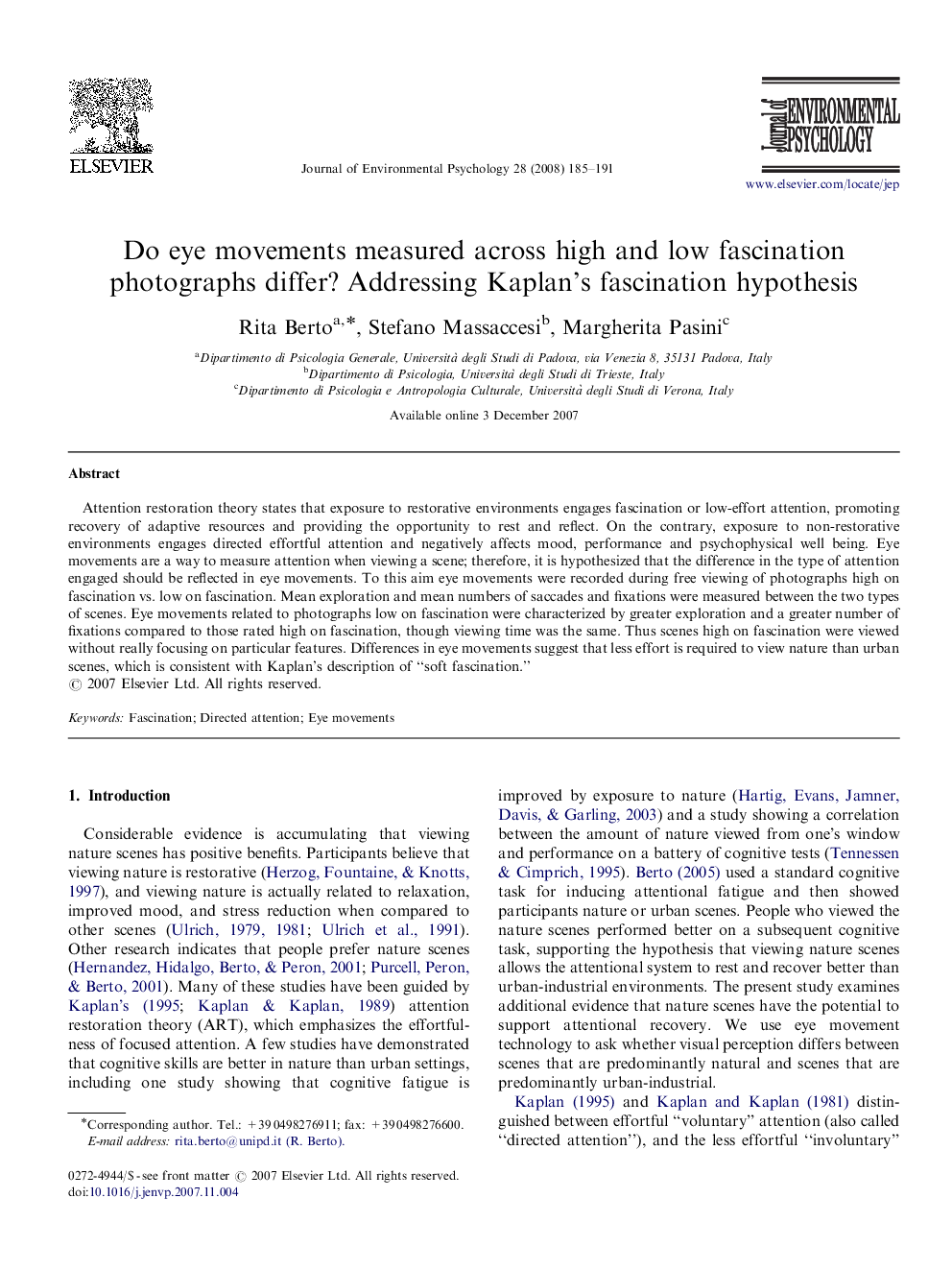| Article ID | Journal | Published Year | Pages | File Type |
|---|---|---|---|---|
| 885897 | Journal of Environmental Psychology | 2008 | 7 Pages |
Attention restoration theory states that exposure to restorative environments engages fascination or low-effort attention, promoting recovery of adaptive resources and providing the opportunity to rest and reflect. On the contrary, exposure to non-restorative environments engages directed effortful attention and negatively affects mood, performance and psychophysical well being. Eye movements are a way to measure attention when viewing a scene; therefore, it is hypothesized that the difference in the type of attention engaged should be reflected in eye movements. To this aim eye movements were recorded during free viewing of photographs high on fascination vs. low on fascination. Mean exploration and mean numbers of saccades and fixations were measured between the two types of scenes. Eye movements related to photographs low on fascination were characterized by greater exploration and a greater number of fixations compared to those rated high on fascination, though viewing time was the same. Thus scenes high on fascination were viewed without really focusing on particular features. Differences in eye movements suggest that less effort is required to view nature than urban scenes, which is consistent with Kaplan's description of “soft fascination.”
